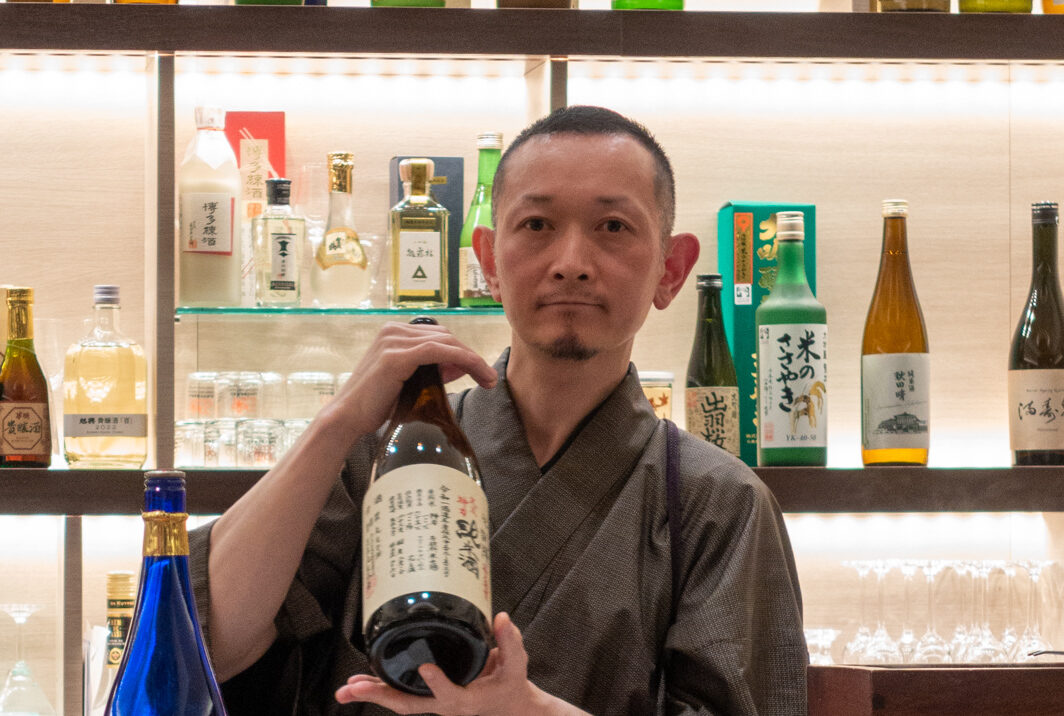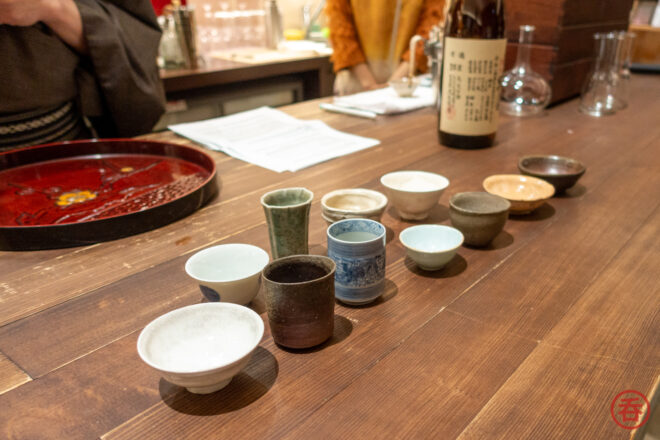One of the cool things about sake is that it… doesn’t need to be cool? Chilled, light sakes are certainly enjoying their moment, but a recent seminar by the Japan Sake And Shochu Makers Association (JSS) offered some members of the media a refreshing look at the joys of warmed sake, also known as kanzake.
For the seminar, JSS brought in Masaki Tada, a renowned Kanzake Master who champions all things kanzake across Japan. While Tada-san previously served as sake sommelier at the likes of Kagurazaka’s legendary Sokyu and the Michelin-starred Fushikino, these days he is perhaps Japan’s foremost warm sake evangelist, giving seminars, consulting, and acting as a “traveling sake warmer.”
Tada-san has built his career around the concept of “washu omakase,” a holistic approach to serving warm sake. The serving temperature is a major component, but he also stresses the importance of choosing the right vessels, offering a tranquil Japanese atmosphere, and respecting both the food and customers to the utmost degree. To that end, his clients are diverse: chefs, tea masters, other food/beverage experts, antique art dealers, other sake experts, and average consumers.
The history of warm sake predates that of chilled sake for a simple reason: historically, it’s been hard to keep sake cold! Back in the Heian period (8th-12th century), sake was only consumed “in-season,” which ran from September 9th until March. September 9th is the day that hiyaoroshi sake–sake that has been pasteurized once in the spring, then left to mature until autumn–is set upon the market. The same day is also “Kiku no Settsu,” the final of five ceremonies of the Japanese imperial court. The chrysanthemum is the traditional flower of the Emperor, so it became a tradition to drink sake with chrysathemum in it for good health.
Fast forward several hundred years to the Edo period (1603-1867), the days of the Tokugawa shogunate, and people started drinking sake year-round. Here’s the kicker though: they drank warm sake even during the summer. It’s pretty unthinkable with Japan’s brutal summers these days, but reishu (chilled sake) simply didn’t exist back then. Warm sake was considered a luxury in those days, something that you would treat guests to. This is the dawn of “okanban,” or a sake warmer. This is a person (usually a woman) whose job it is to heat sake for customers at restaurants. Customer A likes theirs a little warmer than Customer B, Customer C likes theirs piping hot, and so on. Without the multitude of styles that exist today, a variety of dining experiences were instead offered via different levels of heating. If someone had too much, the unspoken 86 was to send them water instead of sake.
From a flavor perspective, it made sense to serve sake warm when possible. Lighter sakes didn’t exist. With umami-rich, earthy flavors, it was likely all better warm.
In Japan’s post-war days, refrigerators finally became part of the average Japanese kitchen. From the 1980s and in the decades since, chilled sake’s popularity has continued to rise, leading to more sake with lighter, fruitier profiles. Kanzake sort of has fallen out of vogue and is often viewed as an old man’s drink.
Why, then, would Tada-san make it his specialty? He explained how an eye-opening experience with one of his senpai at an izakaya turned him on to it. Good quality, warm sake is easier on the body. They reportedly (…as most drinking stories go) went through 15 bottles of sake that night but Tada-san woke up with no hangover. From that day, he was hooked. There’s some science behind that: drinking (alcohol) often makes you feel warm, but in reality you’re losing body heat. Warm drinks counteract this effect to some extent.



Tada-san also let on to some technical details of sake warming. Heating the sake in a glass container — he was using a bottle from iichiko Frasco — gives a slower, more gentle heat transfer. Metal provides a faster, more intense heat transfer. Then there’s the magic of tokkuri: filling up the the neck offers more grainy notes, while filling only halfway allows for a heat exchange within the container, assuring you get consistent temperature throughout.
This is might be a good time for you to review your warm sake terminology. “Atsukan” refers to a specific heating temperature, while “okan” or “kanzake” refers to any kind of warm sake. So while you may hear people ordering “atsukan” at izakaya for any warm sake, this technically isn’t the correct way to order.
From the demonstration, it’s clear that different heating levels can bring out significantly different notes of sake. And not just “hot” or “cold” — 47°C versus 60°C for example can make a big difference. Whisky drinkers are likely already acquainted with a similar concept, where you instead use water to lower the abv to bring out different aromas in your dram.
While not all sake is served better warmed, the next time you’re in front of your favorite bottle of sake, take some aside to experiment with warming it to various degrees. If possible, use a warm water bath rather than a microwave!
Hi there! I created and run nomunication.jp. I’ve lived in Tokyo since 2008, and I am a certified Shochu Kikisake-shi/Shochu Sommelier (焼酎唎酒師), Cocktail Professor (カクテル検定1級), and I hold Whisky Kentei Levels 3 and JW (ウイスキー検定3級・JW級). I also sit on the Executive Committees for the Tokyo Whisky & Spirits Competition and Japanese Whisky Day. Click here for more details about me and this site. Kampai!


